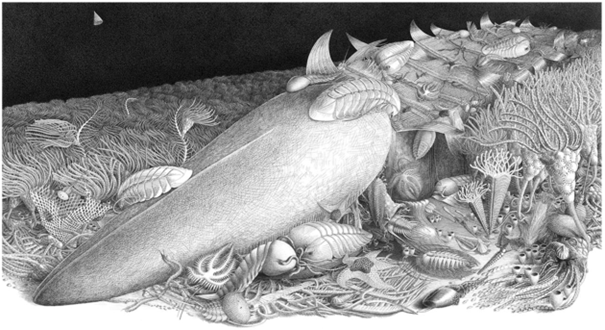The drivers of the Cambrian explosion
We first propose to model the emergence of complex ecosystems in Earth’s oceans 500 millions years ago (i.e. the Cambrian explosion) by using bottom-up simulation of the long-term evolution ofthe food-web. After identifying the trigger(s) of the Cambrian explosion, we will use numerical pseudo-Earths to explore how different processes and phases of Earth’s geoclimatic dynamics lead to the diversification of living organisms.

Is it possible to “replay the tape of life” by simulating the emergence of complex ecosystems and life forms on Earth ? And is it possible to estimate how likely a planet or moon is to be inhabited by complex, rich life ? Thanks to increasing computing capacity and the association of two pioneering approaches, one being the eco-evolutionary models and the second being the production of dynamic pseudo-Earth models, we could model and decipher for the first time the relationship linking planetary interior dynamics and biosphere evolution. Numerous indicators point towards a strong association between Earth's tectonic regime, its landscape and climate, and ultimately, the evolution of species. However, given the temporal and spatial scale of the geological and evolutionary processes at play (i.e. hundred of millions of years of physical and biological changes), establishing causality with conventional top-down approach is an impossible task. In this project, we first propose to model the emergence of complex ecosystems in Earth’s oceans 500 millions years ago (i.e. the Cambrian explosion) by using bottom-up simulation of the long-term evolution of marine animals and food-web on top of pre-Cambrian and post-Cambrian paleoenvironmental reconstructions. After identifying the trigger(s) of the Cambrian explosion, we will use numerical pseudo-Earths coupling geodynamics, climate, surface processes and biological evolution to explore how different processes and phases of Earth’s geoclimatic dynamics (e.g. supercontinent, fragmentation) lead to the diversification of living organisms. Fully coupled numerical planetary models are a unique opportunity to identify planetary configurations, corresponding to potential moons or planets, that could be inhabited by complex ecosystems and life forms. Building on these new findings of physical-biological interactions on an Earth-like planet, we will generate planetary configurations outside Earth’s historical range and evaluate their potential to be inhabited by complex life forms and ecosystems.